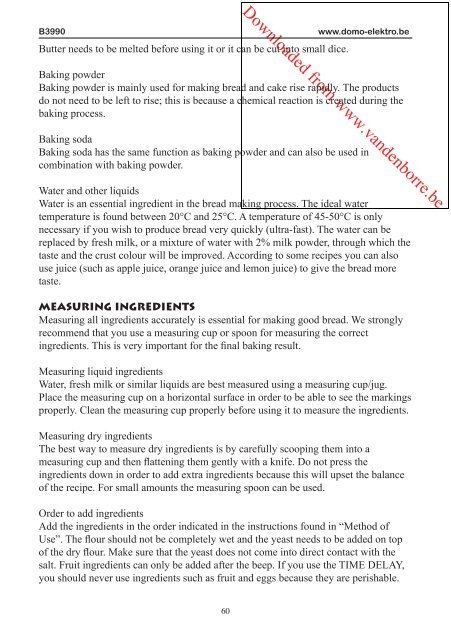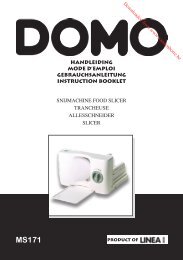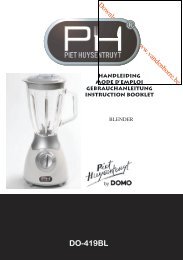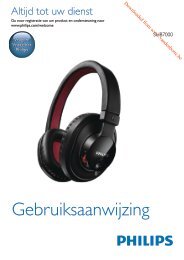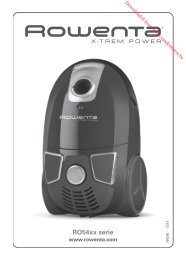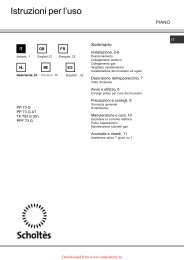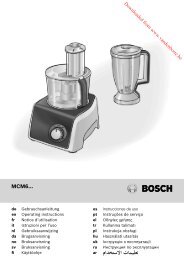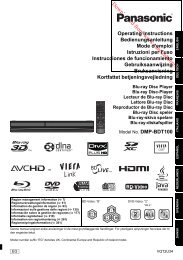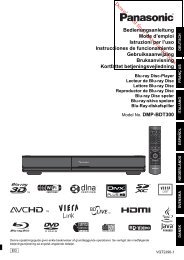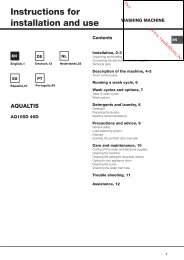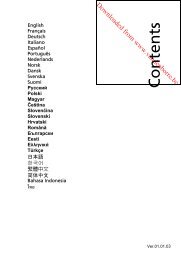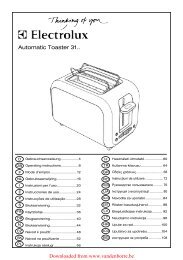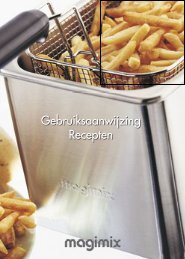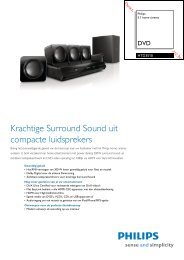Downloaded from www.vandenborre.be
Downloaded from www.vandenborre.be
Downloaded from www.vandenborre.be
Create successful ePaper yourself
Turn your PDF publications into a flip-book with our unique Google optimized e-Paper software.
<strong>Downloaded</strong> <strong>from</strong> <strong>www</strong>.<strong>vandenborre</strong>.<strong>be</strong><br />
B3990 <strong>www</strong>.domo-elektro.<strong>be</strong><br />
Butter needs to <strong>be</strong> melted <strong>be</strong>fore using it or it can <strong>be</strong> cut into small dice.<br />
Baking powder<br />
Baking powder is mainly used for making bread and cake rise rapidly. The products<br />
do not need to <strong>be</strong> left to rise; this is <strong>be</strong>cause a chemical reaction is created during the<br />
baking process.<br />
Baking soda<br />
Baking soda has the same function as baking powder and can also <strong>be</strong> used in<br />
combination with baking powder.<br />
Water and other liquids<br />
Water is an essential ingredient in the bread making process. The ideal water<br />
temperature is found <strong>be</strong>tween 20°C and 25°C. A temperature of 45-50°C is only<br />
necessary if you wish to produce bread very quickly (ultra-fast). The water can <strong>be</strong><br />
replaced by fresh milk, or a mixture of water with 2% milk powder, through which the<br />
taste and the crust colour will <strong>be</strong> improved. According to some recipes you can also<br />
use juice (such as apple juice, orange juice and lemon juice) to give the bread more<br />
taste.<br />
MEASURING INGREDIENTS<br />
Measuring all ingredients accurately is essential for making good bread. We strongly<br />
recommend that you use a measuring cup or spoon for measuring the correct<br />
ingredients. This is very important for the final baking result.<br />
Measuring liquid ingredients<br />
Water, fresh milk or similar liquids are <strong>be</strong>st measured using a measuring cup/jug.<br />
Place the measuring cup on a horizontal surface in order to <strong>be</strong> able to see the markings<br />
properly. Clean the measuring cup properly <strong>be</strong>fore using it to measure the ingredients.<br />
Measuring dry ingredients<br />
The <strong>be</strong>st way to measure dry ingredients is by carefully scooping them into a<br />
measuring cup and then flattening them gently with a knife. Do not press the<br />
ingredients down in order to add extra ingredients <strong>be</strong>cause this will upset the balance<br />
of the recipe. For small amounts the measuring spoon can <strong>be</strong> used.<br />
Order to add ingredients<br />
Add the ingredients in the order indicated in the instructions found in “Method of<br />
Use”. The flour should not <strong>be</strong> completely wet and the yeast needs to <strong>be</strong> added on top<br />
of the dry flour. Make sure that the yeast does not come into direct contact with the<br />
salt. Fruit ingredients can only <strong>be</strong> added after the <strong>be</strong>ep. If you use the TIME DELAY,<br />
you should never use ingredients such as fruit and eggs <strong>be</strong>cause they are perishable.<br />
60


